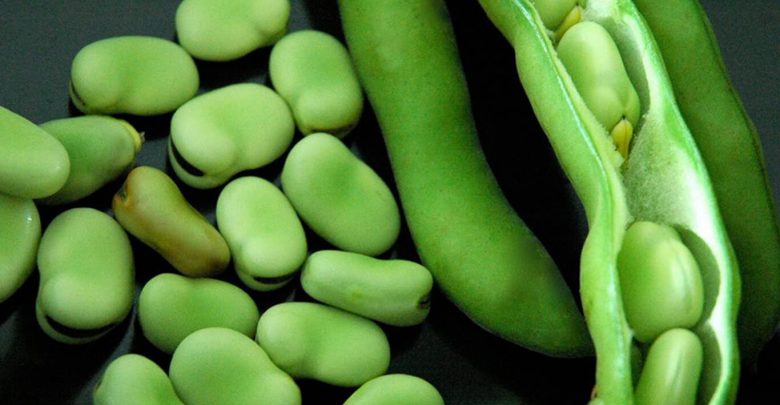
Current Crisis in Egypt’s Faba Beans Crop
“Egypt’s ministry of agriculture has become ailing and needs treatment: as agriculture is run randomly with no future plans, amid adoption of interim solutions and palliatives aimed at only easing the situation, in the absence of the legislative and control role of the House of Representatives (parliament), and the agricultural associations’ abandonment of their role in marketing crops. Accordingly, farmers find themselves alone in the face of currents of corruption and monopolies, something which threatens to undermine and destroy any likely agricultural achievements,” says Hussein Abdel Rahman Abu Saddam, head of Egyptian Farmers’ Syndicate, according to Al-Dostour, a pro-regime private newspaper. The head of the Farmers’ Syndicate also pointed out that despite the existence of all these major problems in the field of agriculture, however, Egypt’s potential is much greater and only needs successful management.
Egypt has recently witnessed a sharp crisis in the production of the faba beans crop which has decreased significantly, partly due to the decline of the area used for cultivating Egypt’s strategic crop. The head of the Farmers’ Syndicate indicated that the area cultivated with faba beans fell from 350 thousand feddans (acres) before 2005 to less than 100 thousand feddans now, which has caused a deficit in meeting the local needs of beans.
First: Cultivation of faba beans in Egypt:
Egypt’s Ministry of Agriculture and Land Reclamation has achieved only 45% of the target area for faba beans cultivation this season (The cultivation season ended in mid-November 2018), with a total area of about 80 thousand feddans only, compared to 175 thousand feddans that had been planned before the start of the season.
However, the ministry of agriculture’s plan has not succeeded due to absence of any incentives for farmers (to grow faba beans), in addition to rising production costs and the low economic returns.
The head of the Farmers’ Syndicate also pointed out that the faba beans crisis was behind increasing imports to meet the local consumption needs, stressing that the decline in the areas cultivated with faba beans was due to two reasons (both related to the State’s mismanagement):
– First, the spread of the yellow spot disease in the crop of faba beans in the Delta, and the spread of hemp broomrape in lands cultivated with faba beans in Upper Egypt,
– Second, Egypt suffers from a major crisis in the agricultural extension services.
Also, the high prices of fertilizers, pesticides and seeds, and the low price of the crop have played a significant role in farmers’ abstention from growing faba beans.
Second: Local Production:
A recent report issued by the Central Agency for Public Mobilization and Statistics (CAPMAS) showed that there has been a significant decline in Egypt’s production of beans over the last ten years. The beans cultivated area during 2016 was 88 thousand feddans with a productivity not exceeding 142 thousand tons, compared to 221 thousand feddans and a productivity of about 413 thousand tons in 2005. Former Minister of Agriculture, Abdel Moneim al-Banna, said in May 2017, that Egypt imports about $ 125 million worth of beans annually.
Other reports also showed there has been a decline in the production of the green and dry beans in the last few years due to three main factors, most notably the high cost of production, the low yield of the beans crop, and the government’s plan to increase the wheat crop’s cultivated area at the expense of other winter crops, in light of suspension of the expansion of arable land required to meet the cultivation needs.
Also, the low quality of faba beans’ seeds and the rising cost of production over time are the main factors that have affected productivity.
In 2015, the area cultivated with (dry) beans in Egypt reached its highest level at 118 thousand feddans, while the area of (green) beans reached its highest level in 2007, with 75.3 thousand feddans.
The annual cultivated areas are volatile and cannot be relied upon to meet the needs of citizens. Thirty years ago, there were 55.5 thousand feddans cultivated with dry beans and about 31,000 feddans cultivated with green beans.
Third: International and domestic prices:
The prices of beans continued to increase sequentially since mid-2018, driven by a drop in global production and the higher prices on the Chicago Stock Exchange, amid expectations for further gains in the coming period.
This is due to the global drought, which caused a decline in the volume of production in the largest bean producing markets in Australia, Lithuania and Canada, where Egypt mainly imports its needs of beans, amid the limited domestic production, and the beans’ gradual international price increases, almost on a daily basis.
According to the Agricultural Crops Division of the Cairo Chamber of Commerce, beans prices have recently risen to 32 Egyptian pounds per kilo and are expected to continue rising next month to reach 35 pounds per kilo.
The price of imported beans ranges between 15 and 20 pounds per kilo (wholesale) and ranges between 18 and 23 pounds (for consumers) according to the home country and quality.
It is also expected that there will be a slight rise in the prices of beans during the coming period by up to 5%, with a decline in global supply, and that the situation in the beans market will not be stabilized before the start of the new harvest locally in May and in the world market in September. Accordingly, the demand on beans declined during the last period by about 50%, in light of the successive price increases.
Fourth: Beans imports:
The volatility of the faba beans crop in world markets affected the rates of Egyptian imports during September and October 2018. Imports rose by about $ 72 million in October due to the large increase in the prices of the international grain market.
Egypt’s imports of beans during the first 10 months of 2018 amounted to about 182 million dollars, compared to 173 million dollars during the same period in 2017, according to the General Organization for Export and Import Control.
The imports during the first nine months of last year did not exceed 110 million dollars, while the imports in October only amounted to 72 million dollars.
Market observers attributed the rise in imports, despite a 35 percent drop in quantities last year, to a drop in the global supply of the crop, caused by climate change and the drought that hit major beans production markets.
According to the Agricultural Crops Division of the Cairo Chamber of Commerce, the volume of imports reached only 300,000 tons in 2018 compared to 600,000 tons on average annually.
The domestic consumption of faba beans has fallen by 50% after the price increase by more than 100% driven by global crises. For the past four years, reliance on faba beans in popular restaurants that used to mainly serve beans dishes at breakfast meals has declined. Also, the Egyptian families’ consumption of beans has significantly declined. However, they frequently buy their needs of beans from restaurants.
The rise in prices of faba beans during the last period has changed the consumption pattern of Egyptians, as both the restaurants and individuals now rely on imported beans rather than on domestically produced beans, as well as the overall decrease in consumption in recent months.




